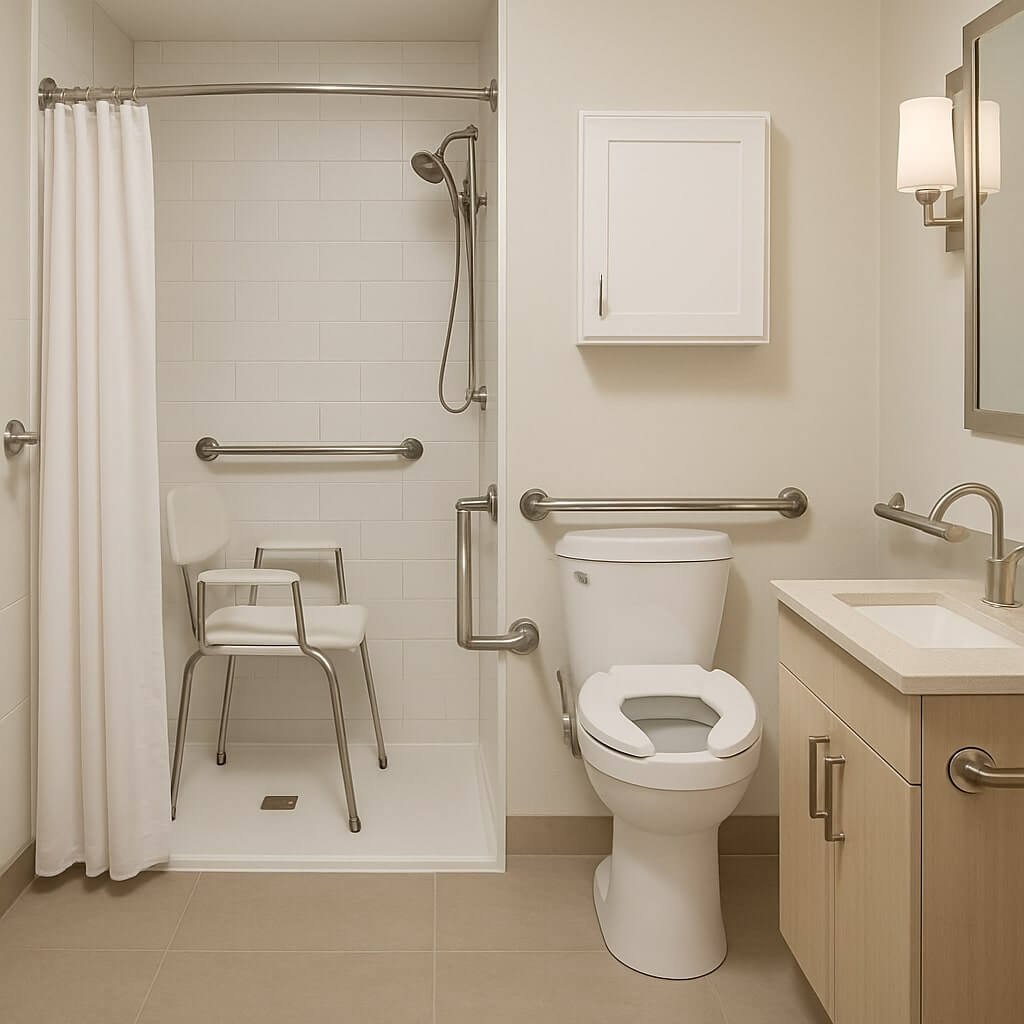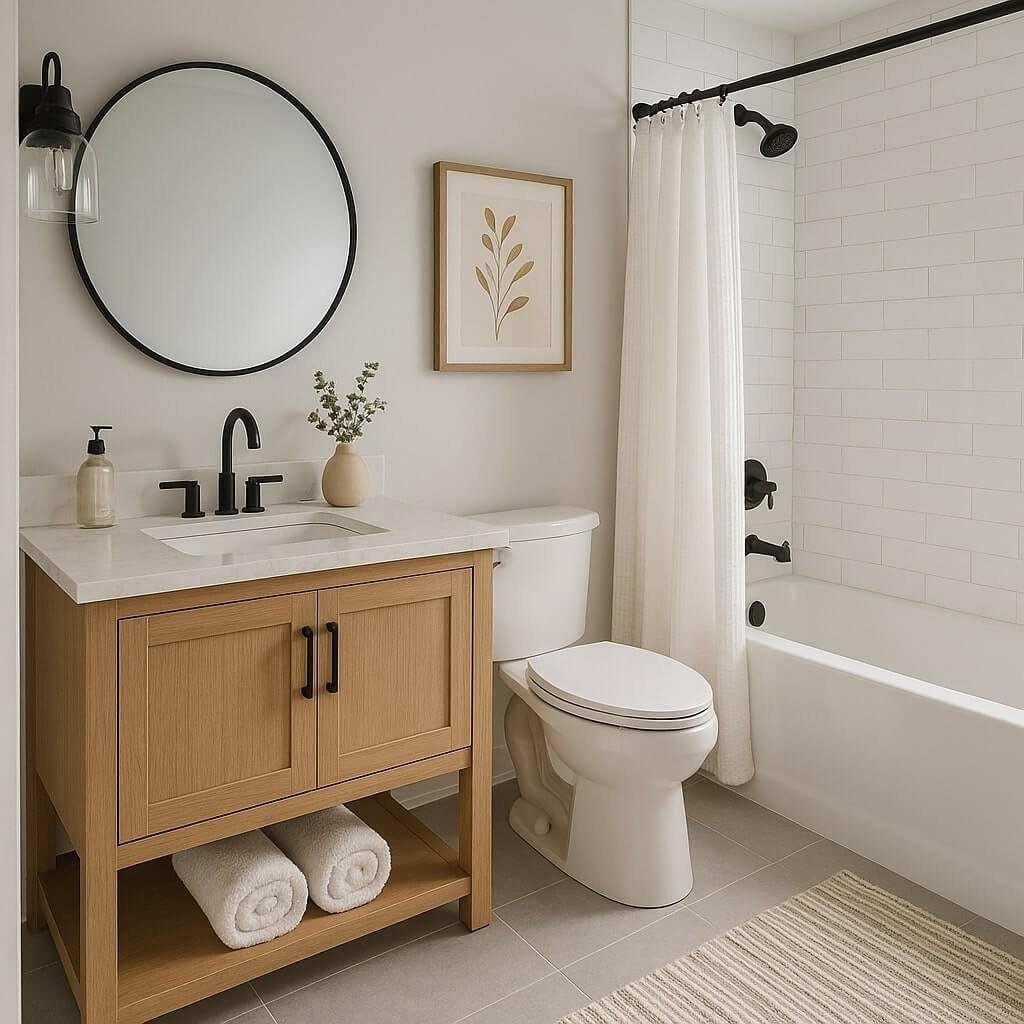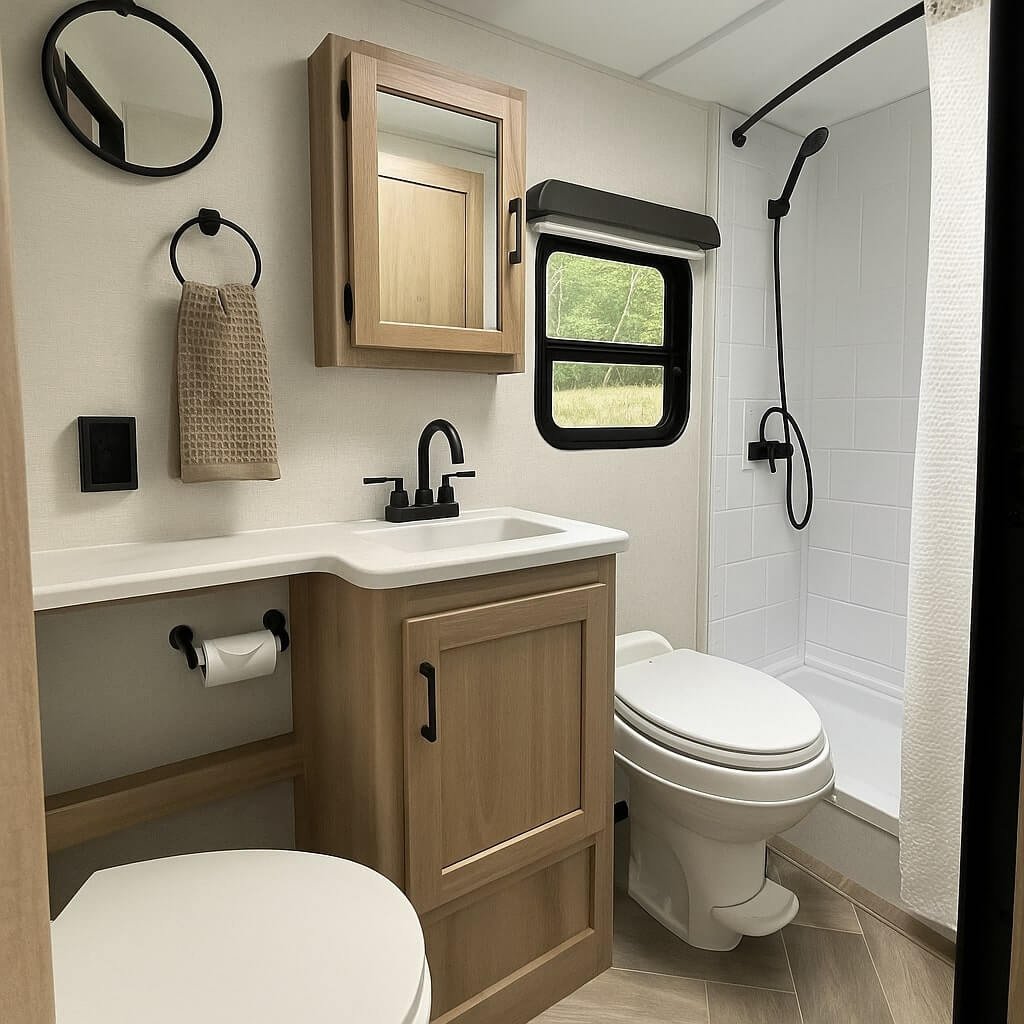When remodeling a bathroom for seniors, it’s vital to prioritize safety and accessibility, especially since Medicare typically doesn’t cover these modifications. You’ll want to take into account essential features like grab bars and non-slip flooring to enhance safety. As you explore affordable options and potential financial resources, you might uncover solutions that fit your budget. Let’s take a closer look at the best strategies to guarantee a safe and functional bathroom for seniors.
Key Takeaways
- Medicare generally does not cover bathroom renovations, but some modifications may be covered under Medicare Advantage plans if deemed medically necessary.
- Evaluate your current bathroom for safety risks, focusing on mobility challenges and the need for accessible features like grab bars and non-slip surfaces.
- Affordable remodeling options include using budget-friendly materials and making simple updates, such as repainting cabinets or installing non-slip mats.
- Check for federal or local grants aimed at helping seniors with home modifications, such as the HOME Investment Partnerships Program.
- When selecting contractors, ensure they are qualified, licensed, insured, and have experience in making senior-friendly modifications.
Understanding Medicare Coverage for Bathroom Modifications
Have you ever wondered how Medicare can help with bathroom modifications? Medicare benefits can provide some assistance, but it’s vital to understand the coverage limitations.
While Medicare typically covers certain durable medical equipment, it doesn’t usually cover home renovations. However, if your doctor deems specific modifications medically necessary for your safety, you might receive help through Medicare Advantage plans.
It’s important to consult your policy details and speak with your healthcare provider to explore options. By understanding these benefits and limitations, you can better navigate your needs for a safer bathroom environment.
Assessing Your Bathroom Needs and Safety Concerns
When evaluating your bathroom needs, consider your mobility and any challenges you face.
Think about accessibility features that can enhance safety, like grab bars and non-slip surfaces.
Identifying these elements can help create a more comfortable and secure space for your daily routine.
Mobility Considerations
As you assess your bathroom needs and safety concerns, it’s essential to contemplate how mobility challenges can affect daily routines.
Consider your current bathroom design and how it supports or hinders senior comfort. Evaluate the space for maneuverability—can you easily move around with a walker or wheelchair?
Think about the height of fixtures; lower toilets and grab bars can enhance usability. Assess the flooring—non-slip surfaces can prevent falls.
Accessibility Features Needed
Evaluating your bathroom needs involves identifying specific accessibility features that can enhance safety and comfort. Consider installing grab bars near the toilet and in the shower to prevent falls. Walk-in tubs are also an excellent option, allowing easy entry and exit while ensuring a safe bathing experience.
| Feature | Benefits | Considerations |
|---|---|---|
| Grab Bars | Prevents slips and falls | Must be securely installed |
| Walk-in Tubs | Easy access for bathing | Requires bathroom space |
| Non-slip Mats | Reduces slipping risk | Regularly inspect for wear |
| Raised Toilets | Easier to sit and stand up | Check height for comfort |
Essential Features for Senior-Friendly Bathrooms
When remodeling your bathroom, focusing on safety enhancements and accessibility modifications is key.
You’ll want to incorporate features that reduce the risk of falls and make daily tasks easier.
Let’s explore some essential elements that can transform your space into a senior-friendly environment.
Safety Enhancements
To guarantee a safe and comfortable bathroom experience, incorporating specific enhancements is essential for seniors.
Start by installing non-slip surfaces on floors and in the shower to prevent falls. Next, consider grab bar installations near the toilet and in the shower, providing stable support when getting up or moving around.
These features not only enhance safety but also boost your confidence in maneuvering the space. Additionally, confirm that lighting is adequate and easy to reach.
Accessibility Modifications
Creating a senior-friendly bathroom involves making thoughtful accessibility modifications that cater to the unique needs of older adults.
Installing grab bars near the toilet and in the shower provides essential support, reducing the risk of falls.
Consider adding a walk-in tub, which makes bathing safer and easier, allowing seniors to enter and exit without straining.
Non-slip surfaces and adjustable showerheads can further enhance safety and comfort.
Make sure to keep pathways clear and provide adequate lighting to prevent hazards.
Affordable Remodeling Options for Seniors
While remodeling a bathroom can seem challenging, especially on a budget, there are plenty of affordable options that cater specifically to seniors.
You can start by choosing affordable materials like laminate countertops or vinyl flooring, which are both stylish and easy to maintain.
Consider budget remodeling techniques, such as repainting cabinets instead of replacing them or updating fixtures for a fresh look.
Installing grab bars and non-slip mats adds safety without significant costs.
Simple changes, like a new shower curtain or towel racks, can also make a big difference.
With creativity, you can achieve a functional, beautiful bathroom without breaking the bank.
Utilizing Grants and Financial Assistance Programs
Finding financial assistance for bathroom remodeling can greatly ease the burden on your budget.
By exploring grants availability and financial support options, you can help make your project more affordable. Consider these resources:
- Federal grants: Look into programs like the HOME Investment Partnerships Program, which offers funds for home modifications.
- State assistance: Check with your local government for state-specific grants aimed at seniors.
- Nonprofits: Organizations like Habitat for Humanity may provide financial aid or volunteer labor for home improvements.
Utilizing these resources can considerably reduce costs and enhance your bathroom’s safety and accessibility.
Choosing the Right Contractor for Your Remodel
How do you guarantee that you choose the right contractor for your bathroom remodel? Start by checking their contractor qualifications, including licenses and insurance.
Ask for references and review past projects to confirm they’ve experience in senior-friendly modifications.
Discuss project timelines upfront to avoid unexpected delays. A reliable contractor should provide a detailed estimate, covering materials and labor costs.
Make certain they communicate clearly and are responsive to your questions. Trust your instincts—if something feels off, it’s okay to keep looking.
Your bathroom remodel is essential, so find a partner who meets your needs and expectations.
DIY Modifications: Simple Solutions for Safety
To enhance safety in your bathroom, consider implementing some straightforward DIY modifications.
These small changes can make a big difference in preventing accidents:
- Install grab bars near the toilet and in the shower for added support.
- Apply non-slip surfaces to the floor and inside the bathtub to reduce the risk of slips.
- Use a shower chair to provide stability while bathing.
Planning for the Future: Long-Term Accessibility Features
As you think about your long-term needs, incorporating accessibility features in your bathroom can greatly enhance your comfort and safety.
Consider future proofing design elements like grab bars, a walk-in shower, and non-slip flooring. These aging in place solutions don’t just accommodate current mobility issues but also adapt to potential future challenges.
A raised toilet seat and a shower bench can make daily routines easier. By prioritizing these features, you’ll create a bathroom that supports your independence and well-being for years to come.
Investing in accessibility now guarantees you’re prepared for whatever the future holds.
Conclusion
To sum up, remodeling your bathroom for safety and accessibility doesn’t have to break the bank. By focusing on essential features like grab bars and non-slip flooring, you can create a safer environment for yourself or a loved one. Explore local grants and consider DIY solutions to keep costs down. Remember, planning for long-term accessibility now can make a big difference in the future. With the right approach, you can enjoy a comfortable, secure bathroom tailored to your needs.













